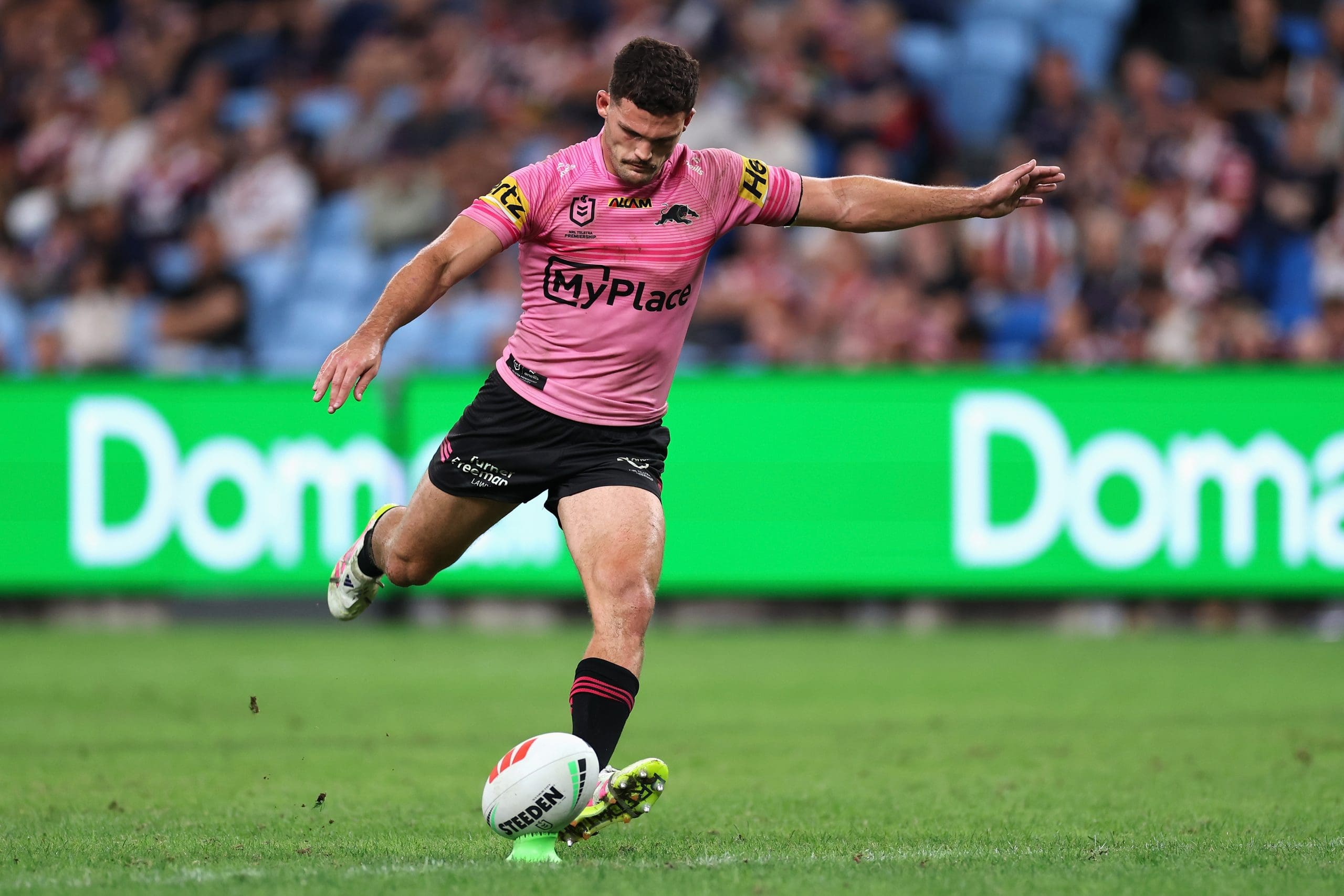The Penrith Panthers have been a dominant force in the NRL over recent years, establishing themselves as one of the premier dynasties in the competition. Their relentless pursuit of excellence, combined with a squad bursting with talent, has delivered premiership glory and marked them as a team to be feared. However, as the latest season unfolds, the signs are clear that the Panthers’ premiership dynasty has reached its conclusion. What was once a juggernaut now faces challenges that could signal the end of their reign at the top of the rugby league world. Understanding why the Panthers dynasty is finished requires a deep dive into multiple factors — from player departures and injuries to changing competition dynamics and internal pressures — all of which have converged to dismantle the foundations of their dominance.
One of the most glaring reasons for the Panthers’ decline is the inevitable player turnover that comes with success. Every dynasty eventually hits a point where key players either retire, seek new opportunities elsewhere, or simply lose form. For Penrith, this cycle has begun to play out with significant impact. The Panthers’ core group, which was instrumental in their back-to-back premierships, is starting to break up. Players who once defined the team’s identity are either moving on or facing uncertainty about their future contributions. This erosion of the core talent pool is never easy to replace, especially when the success of a team was built on a specific style and synergy cultivated over years. The Panthers have struggled to plug these gaps effectively, and as a result, the cohesion that once made them unstoppable is now fractured.
Injuries have also played a major role in disrupting Penrith’s premiership machine. Rugby league is a physically demanding sport, and the toll on players’ bodies can be brutal. The Panthers’ injury list has grown longer and more severe than in previous seasons, forcing the coaching staff to constantly reshuffle lineups and rely on less experienced players. This not only disrupts team chemistry but also affects performance consistency. When your best players are sidelined or not at full fitness, it’s incredibly difficult to sustain the high standards required to win championships. The Panthers, who previously enjoyed relatively good fortune in keeping their squad healthy, now find themselves at the mercy of a series of unfortunate injuries, which have exposed the lack of depth beneath their star players.
Beyond the physical toll and personnel changes, there are broader strategic challenges the Panthers are grappling with. Their style of play, which relied heavily on a blend of relentless pressure defense and clinical attacking structures, has been studied and countered by opposing teams. Over several seasons, coaches across the league have dissected Penrith’s game plan and developed tactics to blunt their effectiveness. The NRL is an evolving competition, and no strategy remains invincible indefinitely. Penrith’s inability to sufficiently innovate or adapt has left them vulnerable to these countermeasures. While they once set the benchmark for how rugby league should be played, the rest of the competition has caught up, leaving the Panthers struggling to find new ways to gain a competitive edge.
Coaching dynamics have also come under scrutiny as a factor in the Panthers’ downturn. The head coach, who guided the team through its golden era, is now under pressure to evolve the squad and maintain motivation among players who have tasted the very highest of success. Managing a team at the peak of their powers is always challenging, but it becomes even more difficult when the hunger begins to fade and the goalposts seem perpetually just out of reach. There are signs that the coaching staff have found it difficult to reignite that fire and push the players beyond their comfort zones. This can manifest in a lack of urgency in close games or an inability to adjust tactics mid-match. In high-stakes environments like the NRL finals, these small margins can determine whether a team is still a dynasty contender or just another club fighting for relevance.
Financial and contract pressures are another invisible but powerful influence. Sustaining a premiership-winning roster requires significant investment and smart contract management. With salary cap restrictions tightening and competition for elite talent fierce, the Panthers have faced tough decisions regarding player retention and recruitment. Some key players have received lucrative offers from rival clubs or overseas competitions, tempting them away from Penrith. The club’s reluctance or inability to match these offers has contributed to the dismantling of the premiership team. This financial balancing act is a reality for all successful clubs, but the Panthers’ recent losses in the transfer market have been particularly damaging, further diluting their talent pool.
Off-field distractions have also contributed to the Panthers’ struggles. Dynasties tend to attract intense media attention, fan expectations, and scrutiny, all of which can place enormous pressure on players and staff. The weight of maintaining a winning legacy can become a psychological burden, impacting performance. Additionally, internal dynamics such as player unrest, contractual disputes, or leadership challenges within the team can erode focus and unity. While the Panthers have maintained a professional front, whispers of discontent and complacency have occasionally surfaced, suggesting the internal harmony that once drove them may be fraying at the edges.
The competitive landscape of the NRL itself is also a key factor in the end of the Panthers’ dynasty. Rugby league is fiercely contested, and every club is constantly rebuilding and improving. Several teams have emerged stronger in recent seasons, fueled by fresh talent and innovative coaching. The Panthers no longer enjoy the same psychological advantage over the competition as they once did. Clubs that were once underdogs have closed the gap, making the path to premiership success more challenging. The rise of rival powerhouses means that Penrith faces a more unpredictable and competitive finals environment, one where even a slight dip in form can end a title run.
The Panthers’ recent performances have reflected these mounting challenges. Where once they would dominate matches with clinical precision, recent games have exposed cracks in their armor. Defensive lapses, inconsistent attacking structures, and a lack of composure under pressure have all been evident. These are symptoms of a team struggling to maintain the standards that won them premierships. The margins that once favored Penrith are now razor-thin, and the mental resilience that defined their dynasty is being tested as never before.
Furthermore, the leadership void left by departing veterans is difficult to fill. Experienced players who have been instrumental in guiding younger teammates and setting standards on and off the field have moved on or are past their peak. While new leaders have emerged, the intangible qualities that come with years of finals experience and premiership success cannot be replaced overnight. The Panthers now find themselves in a transition phase, balancing the integration of youth with the need to remain competitive. This is a delicate process, and the pressure to win can sometimes undermine the development of future stars.
Looking ahead, the Panthers face a crossroads. They can either attempt to rebuild carefully, accepting a period away from premiership contention, or risk pushing too hard to maintain their dynasty at the expense of long-term stability. History shows that dynasties in sports are cyclical, and few teams remain at the summit indefinitely. For Penrith, the challenge will be managing this transition in a way that preserves the club’s culture and identity while laying the groundwork for future success.
In conclusion, the end of the Panthers’ premiership dynasty is a result of a complex interplay of factors. The natural cycle of player turnover, compounded by injuries and strategic stagnation, has eroded the core of their success. Coaching challenges, financial constraints, and off-field pressures have further weakened the team’s ability to dominate. Meanwhile, an increasingly competitive league has exposed Penrith’s vulnerabilities, and their recent performances have reflected this harsh reality. While the Panthers remain a respected club with strong foundations, the era of their premiership dominance is coming to an end. The dynasty that once seemed unstoppable is now finished, ushering in a new chapter for the Panthers and the NRL at large.



